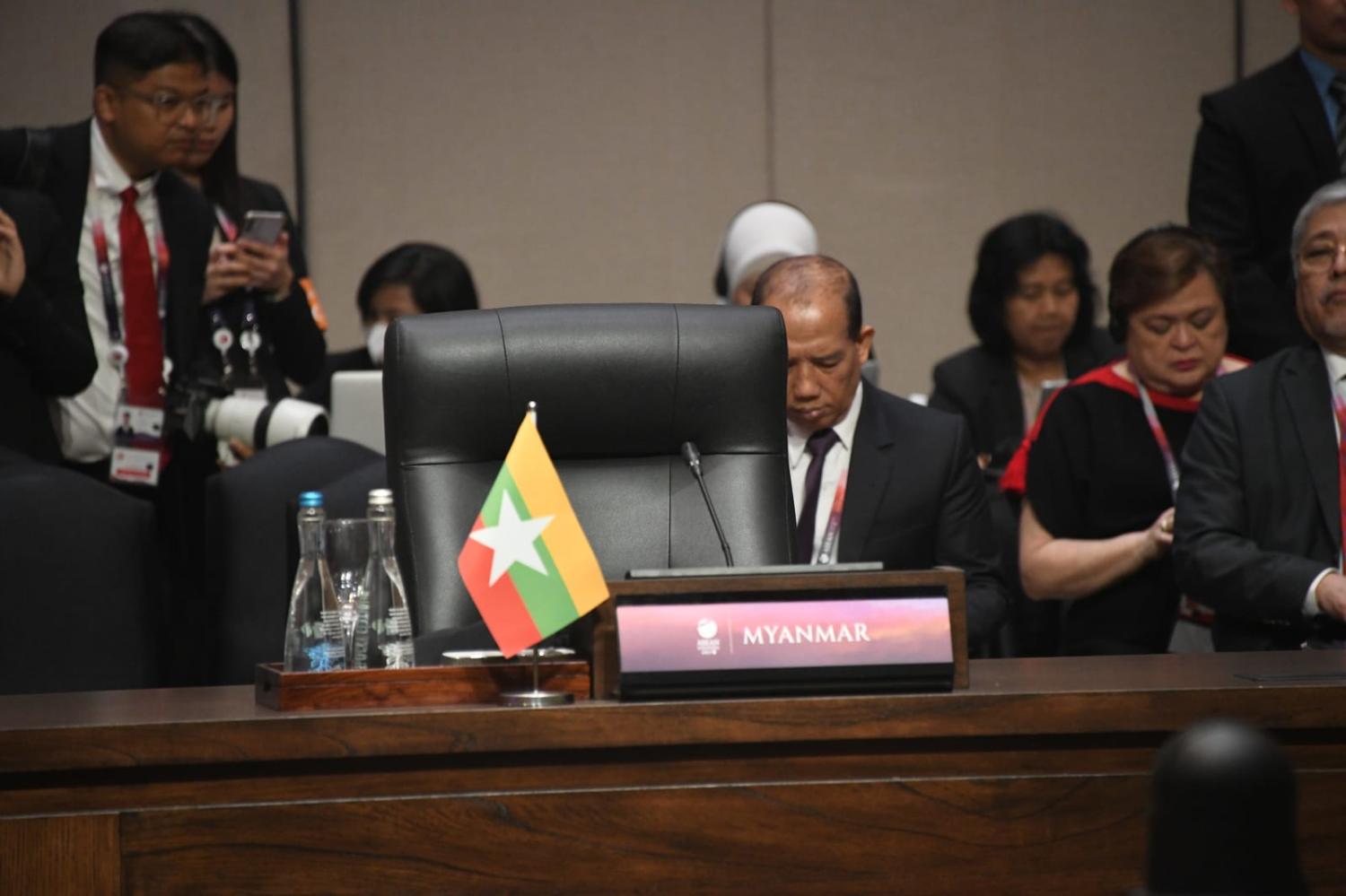In the two-and-a-half years since the military seized power in Myanmar, the junta has faced an increasingly critical West, an ambivalent ASEAN, and a far less critical India and China. New Delhi, in particular, has maintained a relationship with the military’s State Administration Council that operates de facto at the level of normal bilateral ties with a recognised government. India has not condemned the coup and its officials have made repeated trips to Myanmar, attending junta-facilitated public events and reaffirming strong bilateral ties.
A RAND report in July this year classified India’s relationship with the SAC as part of its rise as a power in Southeast Asia. However, as risks to Indian investments in Myanmar have grown, analysts within New Delhi have more categorically highlighted a growing “normalisation” of India’s ties with the SAC – even dropping references to “restoration of democracy” in some bilateral meetings. Recent reports have also alleged the supply of arms by an Indian firm to the junta.
Such ties between New Delhi and the Myanmar military are unsurprising. Some of this reflects concern about the junta’s closeness to Beijing. But it also demonstrates New Delhi’s “strategic autonomy”, a key pillar of which is India not joining Western-led sanctions regimes.
India has well-established ties with the Myanmar army, the Tatmadaw. This is especially due to the open India-Myanmar border historically being used by insurgent groups from India’s Northeastern states. While the Indian Army has unilaterally mounted cross-border raids in Myanmar against such groups with Naypyidaw’s tacit support, it conducted a joint operation with the Tatmadaw in 2019 to dismantle a large number of insurgent camps. In general, the Indian Army’s Eastern Command has maintained a cordial relationship with the Myanmar military, given India’s strategic interests and security vulnerabilities in its northeast.
On the other hand, India has maintained minimal contact with the National Unity Government in exile since 2021, dealing mainly through back-channel processes, if at all. A few closed-door conversations hosted by think tanks in New Delhi featuring representatives of Aung San Suu Kyi’s National League for Democracy (around which the NUG is organised) have proven that a channel to communicate exists. India’s rationale for such a stance has been to prevent undermining the SAC, and to continue its policy of working with whichever regime is in power in Naypyidaw – restricting its support for democracy to the rhetorical level.
But with the junta reportedly struggling to maintain effective control over all of Myanmar’s territory in the civil conflict, India itself has fresh reasons to be wary of the SAC’s current position. A number of the anti-India insurgent camps destroyed earlier by joint India-Myanmar efforts are reportedly now operational again – albeit with some nourishment from the junta, whose new priority is regime preservation.
India has had to re-evaluate its border policy with Myanmar. India’s defence secretary visited Naypyidaw in July to “raise matters relating to India’s security with senior leadership of Myanmar”. Moreover, an older spectre has returned to haunt New Delhi – of a possible Chinese listening post on Myanmar’s Coco Islands allowing the People’s Liberation Army some ability to spy on the Indian military’s tri-service command in the Andaman and Nicobar Islands (even in the face of analyst doubts). As the Indian government has attempted to probe the SAC on the issue, the number of pressure points in the bilateral relationship has evidently increased.
So, it is in India’s interest to dilute its one-sided approach and explore potential contact with the NUG. This becomes more significant in light of China’s increasing public contact with the NUG in recent months; Suu Kyi herself was seen by New Delhi as having overseen increased ties with China when Myanmar was under democratic rule. The Indian Council of World Affairs (the Indian External Affairs Ministry’s think tank) hosted a discreet Track 1.5 dialogue in New Delhi this April, which featured representatives from states including Bangladesh, Indonesia (as then ASEAN chair), Cambodia (as former ASEAN chair), Thailand, China and the SAC. Held as a follow up to a meeting in Bangkok and with another meeting planned in the future, India possibly seeks to nudge the SAC towards having NUG representatives in the room. For New Delhi, this approach is the safest as it involves the SAC in any attempt to eventually reach out to the NUG, instead of undercutting it and opening its own formal lines of communication. As the junta treads closer to India’s red lines by co-opting anti-India insurgent groups in its fight against pro-democracy groups, India’s patience might be wearing thin.
India’s deep engagement with the SAC across the last two years could possibly allow it some leverage over the junta. Yet for a country that has been as volatile as Myanmar’s across the last five decades, it is counterproductive for India to engage with only a single party at any given point. New Delhi is aware of the immanent risks to its current Myanmar strategy. However, the degree to which it can adapt to new realities in Naypyidaw is an open question.

